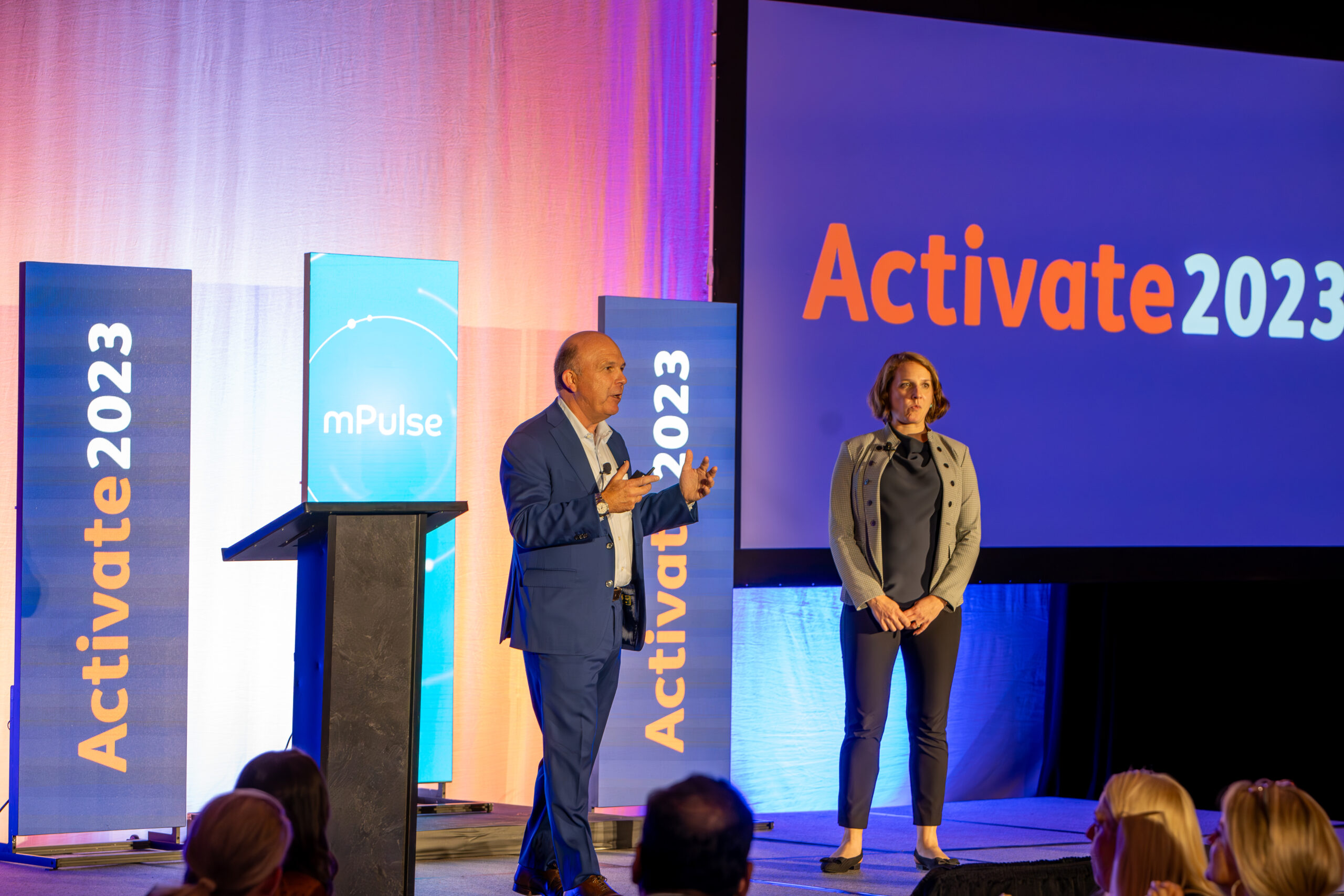Key takeaways from our interview with Solome Tibebu
In the last decade, behavioral health has grown from an ancillary service offering to a critical component of health services and care delivery. According to an OPEN MINDS Market Intelligence Report, spending on mental health services totaled $225 billion in 2019, up 52% from 2009. Companies like Talkspace and BetterHelp, founded in 2012 and 2013, recognized this spike and made it their mission to increase the availability and accessibility of mental health services to those struggling to access and navigate care. Behavioral health has continued to evolve, and it is incumbent on all healthcare organizations to adopt new methods of providing care to vulnerable populations. Learning from innovative companies and forward-thinking leaders is vital to building an effective care strategy for the one in five U.S. adults living with a mental illness.
mPulse sat down with Solome Tibebu, a pioneer in behavioral health technology and innovation, whose passion stems from the care gaps that have existed and still remain in mental healthcare. At the early age of 16 years old, Tibebu started a non-profit online resource, Anxiety in Teens, to offer education and support for teens and young adults who were struggling with anxiety and depression. After ten years, she began working in startups and consulting, continuing to advocate for the role of technology in advancing behavioral healthcare.
This year in June, Tibebu will be putting on her third annual Going Digital: Behavioral Health Tech summit, a conference where health plans, providers, health systems, employers, investors and startups convene to discuss the evolving landscape of behavioral health. The virtual (for now) event is a great opportunity to share best practices for implementing digital resources and innovative technologies to improve access to mental health services. We are proud to be a sponsor for the second consecutive year, and we look forward to contributing to discussions around how healthcare organizations can implement solutions to tackle barriers and make mental healthcare more accessible for all.
Improving Access through Technology Innovation
COVID-19 created an array of challenges to advancing mental health access, but it also sparked a digital transformation that brought innovation to the center stage. With more consumers staying home, “tech has exploded as a response to the pandemic,” Tibebu prefaces. Technology plays an important role in understanding and addressing the social dynamics that affect each person living with mental illness. Some of the challenges that plague mental health accessibility require more than simple one-way consumer interactions, however.
Talking about health plans, Tibebu emphasizes, “stigma is a huge barrier even after they’ve procured some kind of solution, so they need to have a strategy around how they’re gonna address stigma, and engagement of the member.” Stigma can produce feelings of worthlessness and lead to social isolation while social determinants of health (SDOH) like transportation access or income level can prevent consumers from seeking care. To tackle barriers like SDOH and stigma, it is necessary to utilize technology to understand consumer needs and preferences.
Conversational AI and Natural Language Understanding power the capability to deploy behavioral science strategies at scale when communicating with vulnerable populations. For instance, incorporating a strategy like Affect ensures that messaging is based in empathy, increasing motivation to engage with sensitive healthcare outreach. Social Proof is an effective strategy that helps assure consumers that they are not alone and can help reduce social isolation caused by mental health stigma.
Applying behavioral science and identifying SDOH in conversational outreach enables a deeper understanding of consumers. Once individual preferences are captured, healthcare organizations can efficiently tailor relevant content to each consumer and activate meaningful behavior change.
Delivering Tailored Content at Scale
Incorporating clinically validated behavior change techniques helps with understanding the needs and preferences of consumers. Tibebu asks, “now all of these payers have implemented their telehealth solution but it’s the next level – how do we get something more customized, personalized to their respective populations?”
Plans and providers can drive deeper engagement and self-efficacy by adopting tailored engagement strategies that lift utilization of the programs they’ve invested in. Conversational AI enables the orchestration of programs and resource delivery across preferred consumer channels. Natural Language Understanding helps capture important data from consumer responses to help route them to the appropriate digital resource.
A one-size-fits-all care model fails to meet the needs of each consumer, while customization empowers healthcare organizations to intervene with meaningful content that drives behavior change. “How can you identify the consumer’s need and triage them to the right end solution?” Tibebu reiterates. Certain individuals who prefer a visual learning experience may benefit from a course like Living with Anxiety & Depression, while those who respond better to audio can be directed to a podcast like Mental Health Matters.
Providing on-demand, curated content can motivate consumers to take control of their health and execute healthier behaviors, leading to improved outcomes and a better consumer experience.
Impacting Beyond Mental Health
We asked Tibebu why personalization in mental healthcare should be important to payers specifically. She responded, “because mental health is at the vortex of all health…for all of these other conditions, expensive conditions, that are impacted as a result of poor mental health.” Consumers who are negatively affected by mental health are more likely to develop chronic conditions, which piles up costs for both the consumer and the organization providing services. This creates an opportunity for plans and providers to adopt innovative solutions that promote well-being through tailored engagement.
MagellanRx Management serves a complex population and recognized the need to incorporate well-being content for their members who were experiencing loneliness and anxiety from COVID-19. They partnered with mPulse to deploy digital fotonovelas, which use culturally sensitive stories in a comic-strip format to improve health education and activate diverse populations. The program drove impressive outcomes, yielding over a 38% engagement rate and a 90% member satisfaction score.
We questioned how organizations outside of payers and providers can “step up” to make mental healthcare more accessible. Walmart Wellness is a nationally recognized brand whose goal is to “help customers raise their hand and more easily access their hubs,” Tibebu clarifies. Walmart partnered with mPulse to implement SMS solutions along with streaming health education to drive their customers to the right well-being resources. The program included custom learning plans across several wellness topics and produced significant improvements in customer engagement.
After chatting with Tibebu, we are reassured that mental healthcare should be the focal point of an effective engagement strategy. Innovative companies can promote mental well-being and health literacy by leveraging technology that personalizes outreach. Educating consumers with tailored content through timely and convenient engagement builds self-efficacy and lasting behavior change.
Learn more about Conversational AI and streaming health education here.












